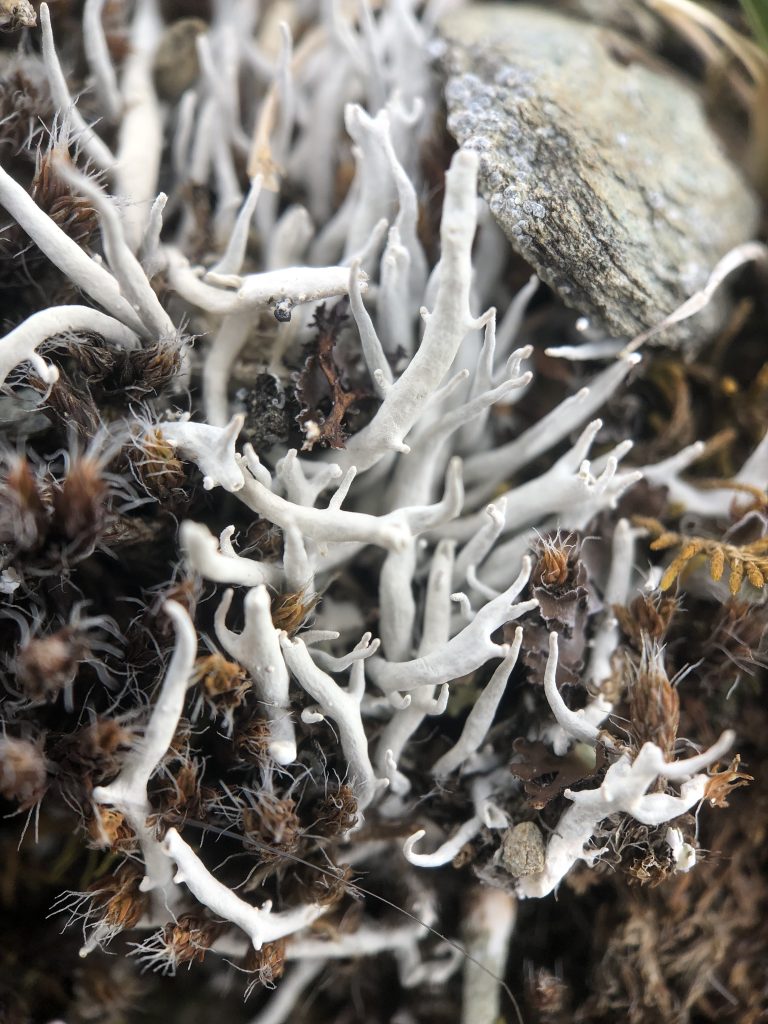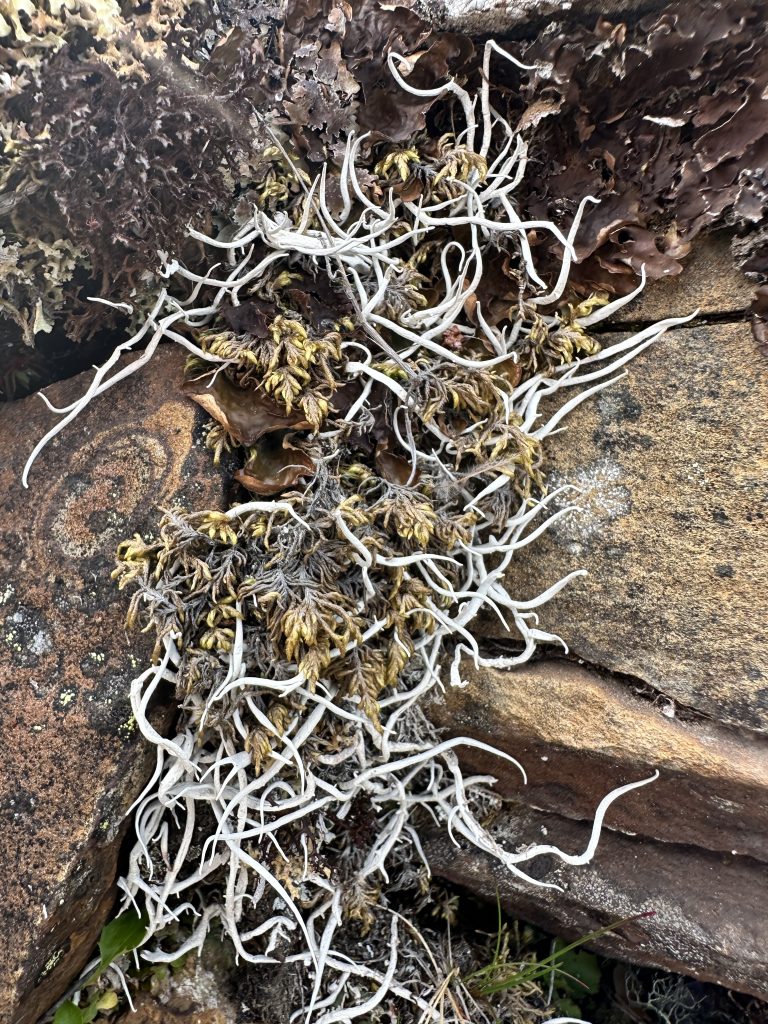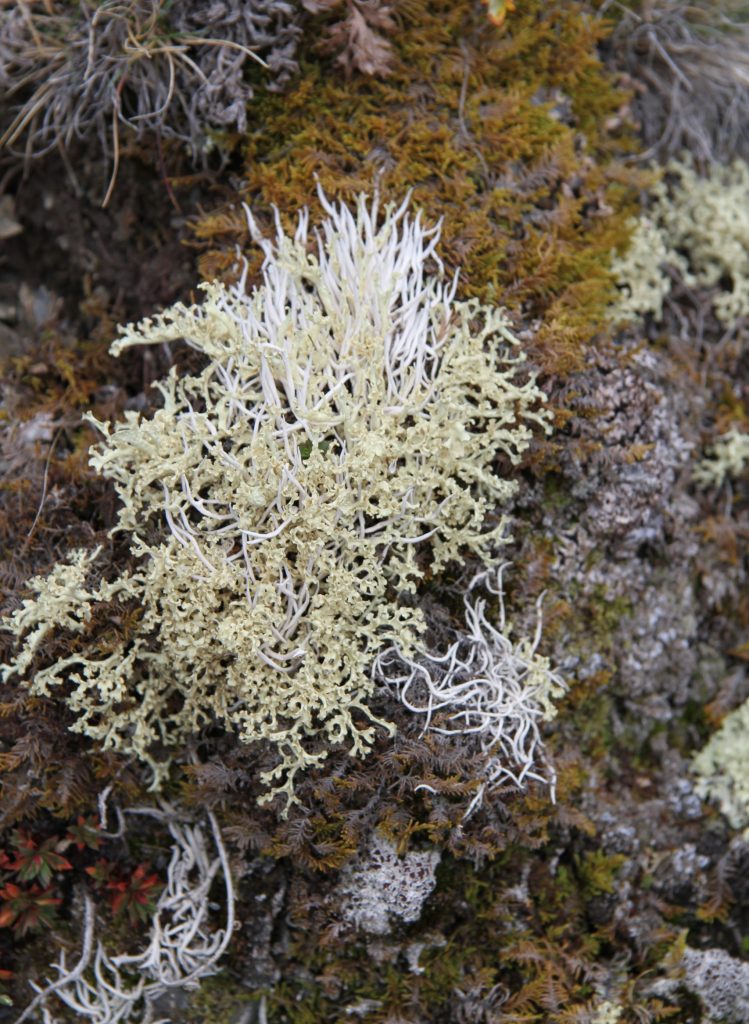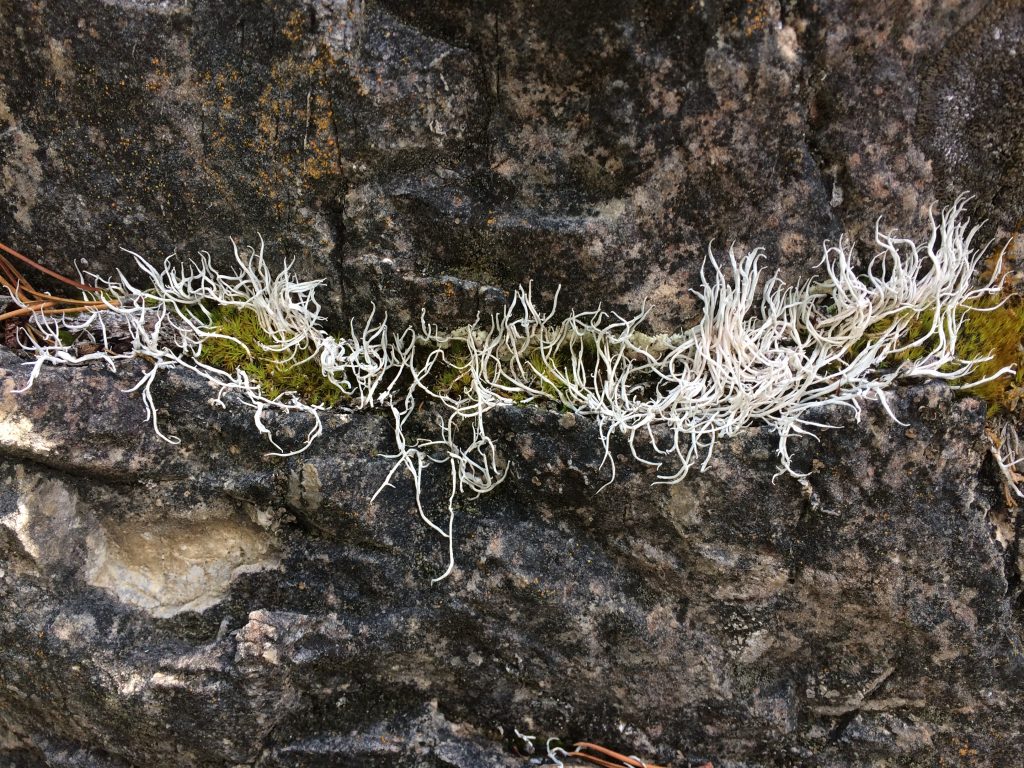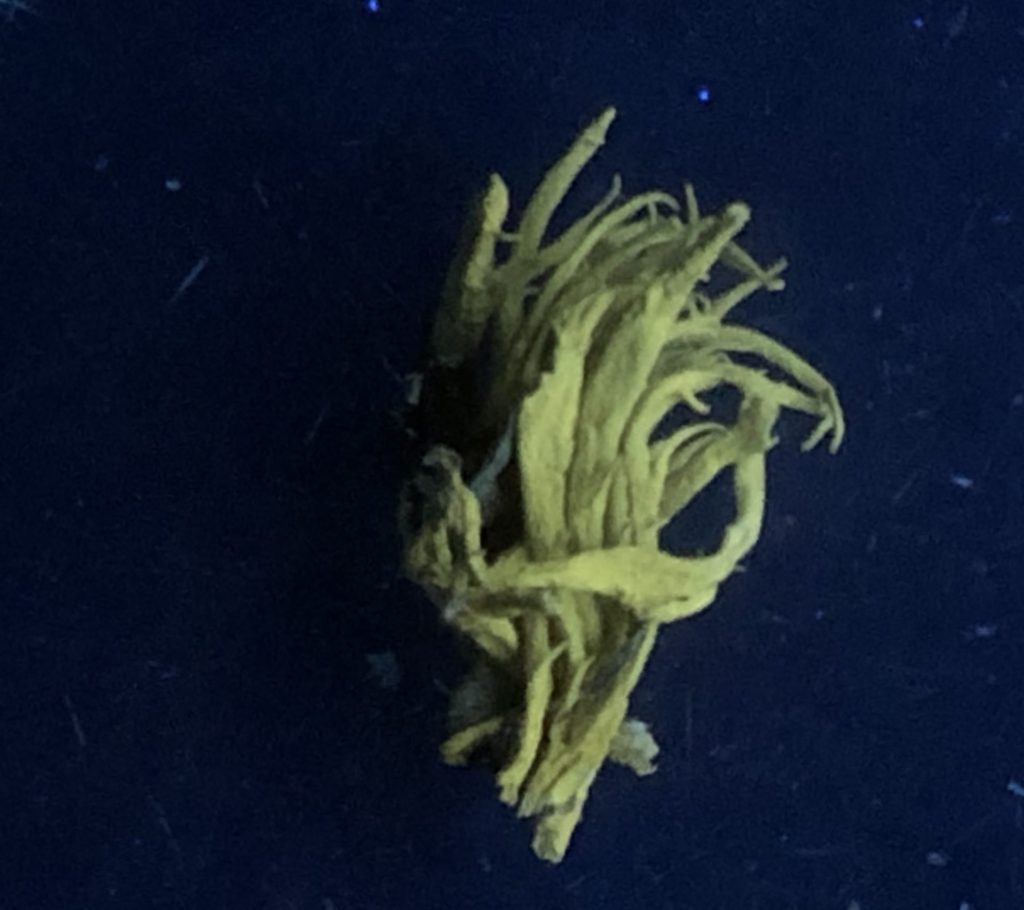Thamnolia
Thamnolia Ach. ex Schaer., 1850
| Common name | Whiteworm Lichens; Dead man’s Fingers |
|---|---|
| Field Characters | Fruticose, wand-like chlorolichens. White, tapered hollow branches, branching sparsely. Erect or prostrate. Cortex dull. Lacking apothecia, soredia and isidia, apparently reproducing by fragmentation alone. |
| Similar genera |
None in Alberta. |
| Ecology | Terricolous, on exposed soil, moss, alpine heath, or nested amongst rocks in mountain sites. |
| Chemistry | Cortex and medulla PD- or PD+ deep yellow, K- or K+ bright yellow, KC-, UV- or UV+ blue-white (thamnolic acid or squamatic and baseomycesic acid). |
| Molecular support |
High as a monophyletic genus. The taxonomic rank of various clades has been debated, with some authors recognizing chemotypes as species. As the chemotypes are morphologically indistinguishable, and in recognition of its clonal nature, we adopt the taxonomy of Jørgensen 2019. |
| Links |
Species recorded in Alberta: 1
- T. vermicularis (Sw.) Schaer. subsp. vermicularis Syn. T. subuliformis
Gallery
- Thamnolia vermicularis, Jasper National Park, AB
- Thamnolia vermicularis, Cardinal Divide, AB
- Flavocetraria cucullata growing with Thamnolia vermicularis, Kluane National Park, YT
- Thamnolia vermicularis on rock, Jasper National Park, AB
- Thamnolia vermicularis UV reaction: UV+ deep yellow
RENR Students: Know T. vermicularis – be able to key it out or recognize it (it is also covered in Brodo et al. 2001 and Goward 1999).
No species level key required: click here for a doc Key to the Fruticose Lichen Genera v.2025-2
Resources
Jørgensen, P.M. 2019. The troublesome genus Thamnolia (lichenized Ascomycota). The Lichenologist 51: 221-226.
Onut-Brännström, I., H. Johanneson, & L. Tibell. 2018. Thamnolia tundrae sp. nov., a cryptic species and putative glacial relict. Lichenologist 50: 50–75.

